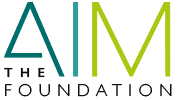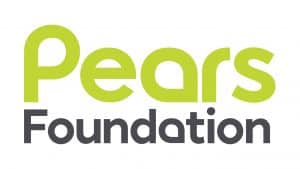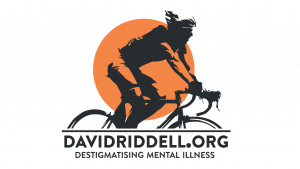Hannah Lewis, a PhD researcher at University of London, makes the case for prevention and intervention of body image concerns and discusses how her PhD project will support the implementation of important government proposals such as the role of Mental Health Support Teams (MHSTs) to deliver secondary prevention interventions in schools.
Body image: a public health issue?
When I say the term ‘body image’, what is it that comes to mind?
Is it selfies? Snapchat filters? Social media? Aspiring to look like supermodels? Or perhaps it is vanity, self-obsession and shallowness?
Unfortunately, this is the case for many people, which is why body image doesn’t have the status of the serious public health issue it is.
In reality, body image is something we all have. Like mental health, it can be seen to exist on a spectrum, where we have a positive body image, a negative body image, or something in the middle. Of course, this fluctuates, and is a dynamic state rather than a static one.
Having a positive body image can contribute to our overall wellbeing, self-esteem and confidence. However, the consequences of a negative body image – also know and body dissatisfaction – can be profound.
Body dissatisfaction can lead to problematic behaviours such as disordered eating, ritualistic compulsions, or risk-taking behaviours such as self-injury (Muehlenkamp and Brausch, 2012), alcohol & substance misuse, smoking to control appetite, unprotected sex, and cosmetic procedures (Government Equalities Office, 2015). Body dissatisfaction can also have an economic impact and prevent those identifying as women from going for jobs or promotions (Government Equalities Office, 2015).
In addition, body dissatisfaction can contribute to the onset of severe mental illnesses such as eating disorders (EDs) and body dysmorphic disorder (BDD).
The repercussions of body dissatisfaction: eating disorders (EDs) and body dysmorphic disorder (BDD)
Whilst EDs and BDD are often categorised and treated quite differently, both have the critical component of body dissatisfaction.
Both disorders look different from person to person, but common symptoms can include having a distorted body image which leads to disordered behaviours such as ritualistic compulsions and disordered eating behaviours such as restriction, bingeing and purging.
Anorexia nervosa (AN) – which is a restrictive eating disorder – has the highest mortality rate of any other psychiatric disorder (Arcelus et al. 2011). The impact of this disorder is equally as devastating as those with EDs, with it being reported that suicidality is 45 times higher than that of the general population (Phillips and Menard, 2006).
Due to the devastating effects that these disorders have on people, upstream prevention strategies – such as school-based interventions – are of the utmost importance.
Policy proposals for prevention and early intervention: using schools as an opportunity to improve body image
School settings are widely recognised as appropriate settings for interventions to improve body image among adolescents (Yager et al., 2013), which was demonstrated in the Children and Young People’s Mental Health Green Paper. The green paper proposed the development of Mental Health Support Teams (MHSTs), who would bridge the gap between NHS Children and Young People’s Mental Health Services (CYPMHS) and educational settings.
One of the roles of the new MHSTs was to deliver “group-based interventions engaging participants in critiquing the ‘thin ideal’, which can be effective in reducing eating disorder symptoms and body image concerns, when targeted toward high-risk adolescent girls.” (Department for Education and Department for Health and Social Care, 2017, p22).
Exploring implementation of policy proposals: how I’m hoping my PhD can help
The prospect of rolling out evidence-based intervention to improve body image is a very exciting one given the profoundly severe implications of body dissatisfaction. However, the majority of evidence-based interventions have only been trialled with middle-class, female and White, with little consideration for cultural influences among diverse communities (Mental Health Foundation, 2019).
This is why the green paper proposal is forming the basis of my PhD research, where I want to explore what relevant, inclusive body image interventions look like from both young people’s and healthcare professionals’ perspectives.
From consequent conversations with MHST practitioners, there were a number of barriers and facilitators identified in implementing this proposal, which can be viewed in detail here.
In sum, conversations revealed that there was an increased prevalence of body image anxiety and demand from schools to address this post-Covid-19, despite a prioritisation of anxiety disorders (though no OCD/BDD) and behavioural difficulties throughout the Covid-19 pandemic. Fundamentally, my project will aim to address the omission of training from the MHST curriculum and delivery manuals and define the blurred boundaries and scope between specialist CYPMHS eating disorder outreach teams and MHSTs by focusing on secondary prevention initiatives.
For further information on how I will be supporting the implementation of this proposal, or if you would like to be involved, please contact h.k.lewis@qmul.ac.uk
Author: Hannah Lewis
About the author
Hannah Lewis is a PhD researcher at Queen Mary, University of London where she studies culturally inclusive prevention strategies for eating disorders and body dysmorphic disorder – both of which she has lived experience of. Prior to this, Hannah worked in a senior role for a national mental health charity across their research, policy and practice areas where she lead on children’s mental health policy.
References:
Arcelus J, Mitchell AJ, Wales J. et al. 2011. “Mortality Rates in Patients with Anorexia Nervosa and Other Eating Disorders: A Meta Analysis of 36 Studies.” Arch Gen Psychiatry., 68. Pp: 724-31.
Department for Education and Department for Health and Social Care. 2017. Transforming Children and Young People’s Mental Health Provision: a Green Paper. [Online] [Accessed: 28/06/21] Available from: https://assets.publishing.service.gov.uk/government/uploads/system/uploads/attachment_data/
file/664855/Transforming_children_and_young_people_s_mental_health_provision.pdf
Government Equalities Office. 2015. Body Confidence Progress Report. [Online] [Accessed 28/06/21] Available from: https://www.gov.uk/government/uploads/system/uploads/attachment_data/file/417186/
Body_confidence_progress_report_2015.pdf
Mental Health Foundation, 2021. Body image and ethnic background. [Online] [Accessed: 28/06/21] Available from: www.mentalhealth.org.uk
Phillips, KA and Menard, W. 2006. ‘Suicidality in Body Dysmorphic Disorder: A Prospective Study’. Am J Psychiatry. [Online] 163 (7).
Yager, Z., Diedrichs, P., Ricciardelli,L.A., Halliwell, E. 2013.‘What works in secondary schools? A systematic review of classroom-based body image programs.’ Body Image. [Online] 10 (3)






